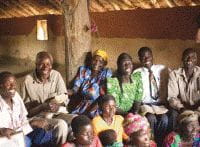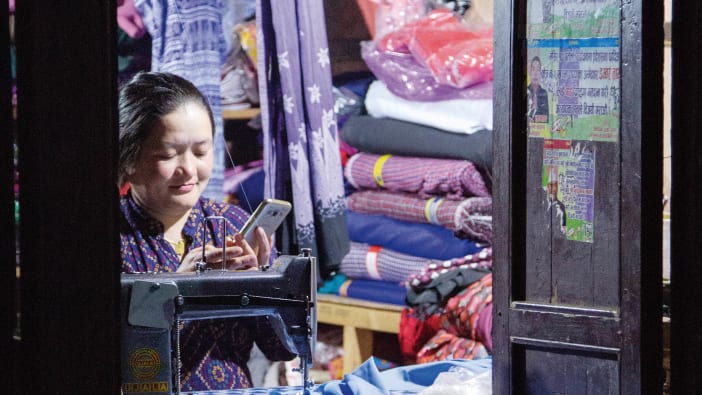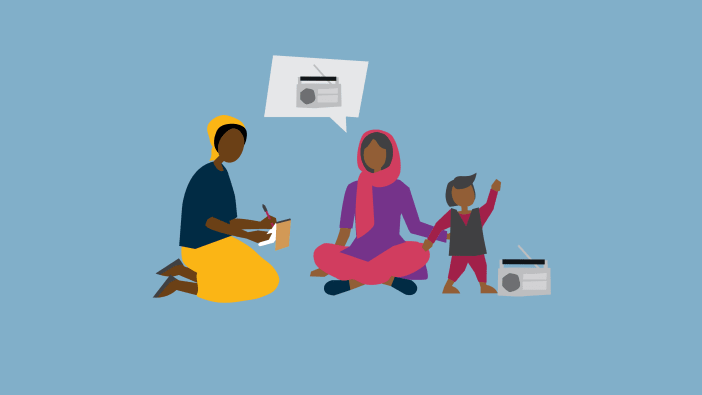Discussing stigma with others can be a first step to overcoming prejudices. Here we provide a suggested outline for a group discussion.
Aims
- Discuss stigma and identify it in the local community
- Consider a story about Jesus, as an example of holistic healing from stigma, disease, and shame
- Conduct a role play on accepting and helping someone who suffers from stigma
- Share ideas for reaching those who suffer from stigma in the community
Time
30 minutes
This script is a guideline. It has been written for use with Christian community groups, but you may want to adapt it for groups with different beliefs. You can improve it with local examples, stories and proverbs. How can you make it relevant for your group?
Task 1 - Identifying stigma
Let’s discuss:
- What does stigma mean?
- What types of situations create stigma in our community?
Task 2 - Jesus’ example
I invite you to hear a story about how Jesus treated a man who suffered from shame related to a sickness. This man had a disease called leprosy, which caused sores to spring up on his entire body. The law was that people with leprosy must live outside of the camp away from everyone, and must shout “Unclean! Unclean!” when they approached town. Being unclean, this man could not work or raise a family.
The man with leprosy (luke 5:13-14)
While Jesus was in one of the towns, a man came along who was covered with leprosy. When he saw Jesus, he fell with his face to the ground and begged him, “Oh, Lord, please, if you are willing, heal me!” Jesus was moved with compassion, and he did what no one else would dare – he reached out his hand and touched the man. “I am willing,” he said. “Be healed!” And immediately the leprosy left him. Then Jesus told him, “Don’t tell anyone, but go, show yourself to the priest and offer the sacrifices that Moses commanded for your cleansing as a testimony.”
In a group of three or four people, discuss: In what ways did Jesus reach out to this man?
Consider the man’s physical, social, emotional, and spiritual needs.
After a few minutes, ask participants to share their answers. Affirm answers according to the four categories mentioned below:
Physical: When Jesus cured the man’s leprosy, his physical body was restored to health. He was empowered to work again, earning his own living.
Social: When Jesus healed his disease, his relationships were restored. When he touched him, he was considered clean and could rejoin his family and community.
Emotional: When Jesus reached out to touch him, his dignity was restored. He experienced the love of God and understood that he was valuable in God’s sight.
Spiritual: He learned that Jesus cared for him and wanted him to be able to rejoin the worshipping community. Jesus told him to show himself to the priest to fulfil the law and as a sign to all that he would welcome those who had been excluded and give them new hope.
Task 3 - Role play
Either the facilitator or another person can play the part of Ruma. This script is for the person playing Ruma, who may wish to partially cover her face or speak facing away from the group.
Ruma is returning to the community where she grew up. You are going to play the role of Ruma’s fellow community members. Listen to Ruma’s story, and be prepared to come up to me (as Ruma) and say how you are going to help me and my children.
THE ROLE PLAY OF RUMA
My name is Ruma. Some of you know me from our childhood. About a year ago my husband threw acid at me. He said I was unfaithful. It wasn’t true. The acid hit the side of my face, burning my skin away. I am often in pain and I have lost sight in one eye. My in-laws cast me out of the house and the community. I ran away with the children. For months I couldn’t work. We sold many things to survive. Wherever I go, people are frightened by the way I look. My children are teased by other children. No one will buy from my business.
Ask each participant to answer the question:What can you do to help me (Ruma)? Consider my physical, social, emotional, and spiritual needs and the needs of my children.
Task 4 - Ideas for action
Think about people in the community who have suffered because they have been left out of normal community life. It is our responsibility to show compassion to those who suffer. Think about those who are not considered ‘normal’ or ‘one of us’.
Discuss: What steps can we take to help those in our community who have been treated badly because of stigma?
After all of the participants have spoken, thank them for their ideas.
Think about someone who suffers from stigma in your community. I invite you to consider a way that you can help them, and turn your idea into action.
Ask the participants to tell the person next to them one thing they are going to do.
To help stop stigma in our community, I invite you to share what you have learned with a friend or neighbour.
It may be appropriate to end the session by praying together.
John Mark Bowers is the Curriculum Program Manager at the Chalmers Center for Economic Development.
[email protected]
Leprosy facts
- Leprosy develops very slowly over about five years. Symptoms sometimes take 20 years to appear.
- Leprosy is only mildly infectious. It is spread by droplets from the nose or mouth of people who have untreated leprosy during close and frequent contact. It is not spread through touch.
- Leprosy can be cured by medicines. Disability can be prevented if the treatment starts early.
- Stigma often prevents people from seeking treatment.










